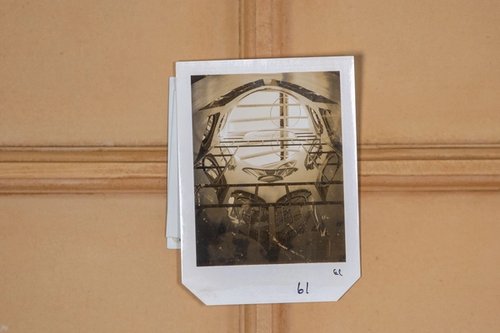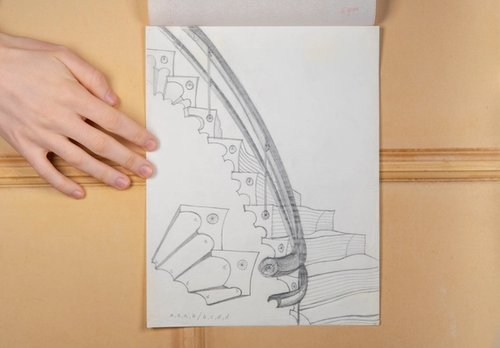As part of our Post-Modern Cosmologies season, The Cosmic House invited Full Moon Theatre into a game of archival call-and-response, drawing out the parallels and convergences with Charles’ polymathic interests at the intersection of cosmology, architecture and art.
This archival display takes the Moonwell – a somewhat hidden part of the house – as its starting point. The Sun and Moon are key symbolic counterpoints in The Cosmic House: the Sun as source of energy and power, the Moon its mystical, shifting counterpart. This duality plays out between the Solar Stair, described by Charles as ‘the physical and psychological centre of the house’, and the Moonwell, its lunar and conceptual satellite. On axis with the Solar Stair, the Moonwell is a semi-circular shaft with its mirrored surfaces creating the illusion of a circular well of light that illuminates an otherwise dark area of the house. Where the Solar stair draws on the rhythms of the solar year, the Moonwell reflects the phases of the moon.
Founded in the 1980s by opera director Humbert Camerlo with engineer Peter Rice, the Full Moon Theatre used giant reflectors to amplify and direct the light of the full moon, illuminating open-air performances without electricity. The result was a cosmic stage where art, myth, and astronomy converged under starlight. Today, Full Moon Theatre continues as an evolving research project and creative workshop developing reflector designs with open resources to support sustainable, collaborative moonlit theatres worldwide. Like Charles’ work, Full Moon Theatre explores the intersection of art, science, and environment – a shared fascination with cosmic cycles and ritual that guides its response to the archival pieces shown in the display.

